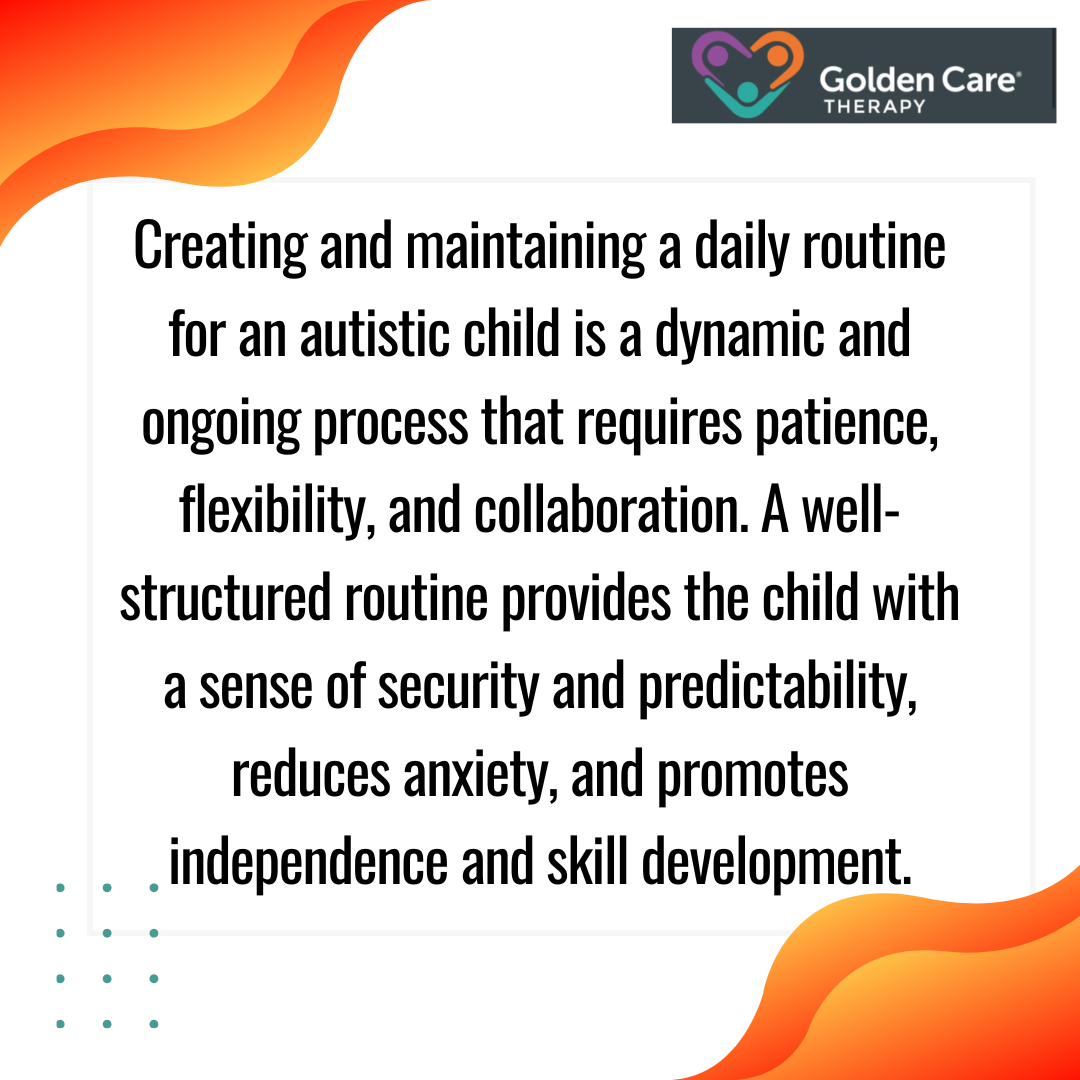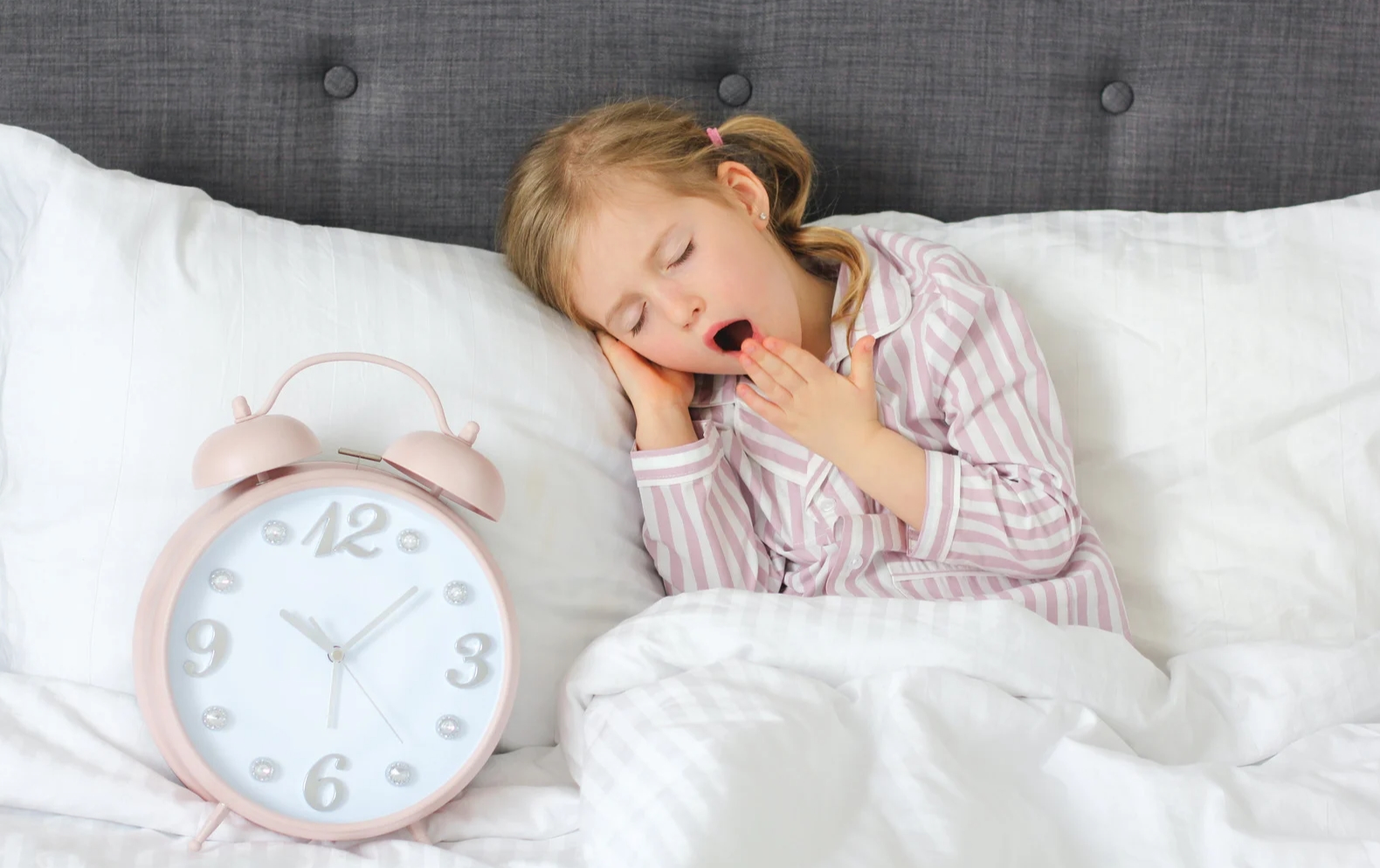Creating a consistent and structured daily routine for an autistic child can significantly enhance their sense of security and help them manage the day more smoothly. Establishing routines can provide predictability, which is often comforting for children with autism.
In this article, we’ll look at the importance of daily routines for autistic children and offer several useful strategies for creating an effective routine for them.

Why are Routines Important?
Routines play a crucial role by providing structure and predictability in daily life. Routines offer a sense of security and stability which helps them feel safe and comfortable in their environment. Consistent routines also promote healthy habits and behaviors, such as regular sleep patterns, meal times, and hygiene practices, which are essential for their physical and emotional well-being.
By knowing what to expect next, children can develop a sense of independence and responsibility as they learn to follow the sequence of activities. Changes in routine or unexpected events can cause anxiety and distress. However, a well-structured daily routine can help reduce stress, increase independence, and improve overall behavior.
Overall, routines contribute significantly to a balanced and fulfilling life by promoting stability, health, and personal growth.

Morning Routine
A structured morning routine sets the tone for the rest of the day.
It should start with a consistent wake-up time. Using visual schedules or alarm clocks with clear images can be helpful. After waking up, the child should engage in activities like brushing teeth, washing face, and getting dressed. Clear, step-by-step instructions or picture guides can assist in these tasks.
Breakfast is another important part of the morning routine. Offering choices within a structured framework can empower the child while maintaining order. For example, you could present two options for breakfast and allow the child to choose. Consistency in the breakfast menu can also be comforting.
School or Learning Time
For school-aged children, the transition from home to school can be challenging. Preparing the child for school with a visual schedule can ease this transition. This can include showing pictures of the school bus, the classroom, and the teacher.
For homeschooled children, a dedicated learning space free from distractions is crucial. A set timetable for subjects and breaks helps maintain focus and structure.
Break and Playtime
Breaks and playtime are essential parts of the daily routine. These periods should be predictable and occur at regular intervals. During breaks, encourage activities that the child enjoys and that help them relax. Sensory play, such as using playdough, sand, or water, can be particularly beneficial.
Physical activities like jumping on a trampoline or playing with a ball can also help burn off excess energy and improve motor skills.

Lunchtime
Lunchtime should be consistent in timing and structure. Just like breakfast, offering choices within a structured framework can be helpful. Some children with autism have specific dietary preferences or restrictions, so it is essential to consider these when planning meals.
A visual schedule showing the steps of mealtime, from washing hands to sitting at the table and eating, can provide clarity.
Afternoon Activities
The afternoon can include a mix of structured activities and free play. Structured activities can involve educational games, arts and crafts, or therapeutic exercises. It is beneficial to alternate between high-energy and low-energy activities to keep the child engaged without overwhelming them.
Free playtime allows the child to explore their interests independently. However, it is important to maintain some level of supervision to ensure safety and provide support if needed. For younger children, incorporating sensory activities like swinging, spinning, or tactile play can be soothing and beneficial.

Evening Routine
The evening routine should focus on winding down and preparing for bedtime. Dinner should be served at a consistent time each day. After dinner, engaging in calm activities like reading a book, drawing, or listening to soft music can help the child transition into a more relaxed state.
Bath time can also be a soothing part of the evening routine, providing both sensory input and a clear signal that the day is ending.
Bedtime Routine
A consistent bedtime routine is crucial for promoting good sleep hygiene. This routine should start with a clear signal that it is time to wind down, such as dimming the lights or playing soft music. Activities like brushing teeth, putting on pajamas, and reading a bedtime story should follow.
Ensuring the bedroom environment is conducive to sleep is also important. This includes having a comfortable bed, appropriate lighting, and minimizing noise and distractions.

Handling Transitions and Changes
Despite the best efforts to maintain a consistent routine, changes and transitions are inevitable. Preparing the child for these changes in advance can help mitigate anxiety. Using social stories, which are simple, illustrated narratives explaining what to expect, can be effective.
Additionally, incorporating flexibility into the routine by having set times for free play or choosing activities can help the child adapt to changes and disruptions in their routines more easily.
Apart from that, here are several useful strategies that could help:
Visual Schedules and Communication Tools
Visual schedules are powerful tools for helping children with autism understand and follow their daily routines. These schedules use pictures, symbols, or written words to represent different activities. They can be displayed on a board, printed out, or accessed on a digital device.
Consistently referring to the visual schedule throughout the day reinforces the routine and helps the child anticipate what comes next.
For non-verbal children or those with limited communication skills, using communication tools like picture exchange communication systems (PECS) or augmentative and alternative communication (AAC) devices can facilitate understanding and expression. These tools empower the child to communicate their needs and preferences, reducing frustration and enhancing their participation in the daily routine.
Involving the Child in Creating the Routine
Involving the child in creating their daily routine can increase their sense of ownership and cooperation. Depending on the child’s age and abilities, they can help choose activities, design visual schedules, or set up their learning space. This involvement fosters independence and self-advocacy skills.
Collaborating with Therapists and Educators
Collaboration with therapists, educators, and other professionals involved in the child’s care is essential for creating a comprehensive and effective daily routine. These professionals can provide insights into the child’s strengths, challenges, and specific needs.
Regular communication and coordination ensure that the routine supports the child’s overall development and well-being.
Balancing Structure and Flexibility
While consistency is vital, it is also important to incorporate some level of flexibility into the routine. This balance allows for spontaneous moments of joy and learning while maintaining the overall structure.
For instance, having set times for free play or offering choices within the routine provides flexibility without compromising predictability.
Monitoring and Adjusting the Routine
Regularly monitoring and adjusting the routine based on the child’s evolving needs and preferences is crucial. What works well today might need modification in the future. Observing the child’s responses to different activities and transitions can provide valuable insights. Adjustments can be made to ensure the routine remains effective and supportive.

Creating a Supportive Environment
The environment in which the routine takes place plays a significant role in its success. Ensuring that the home or learning environment is organized, clutter-free, and equipped with the necessary tools and resources can enhance the child’s ability to follow the routine. Sensory-friendly spaces with calming elements like soft lighting, comfortable seating, and sensory toys can also contribute to a supportive environment.
Encouraging Independence
A well-structured daily routine should also aim to promote the child’s independence. Gradually increasing the child’s responsibilities and encouraging them to complete tasks with minimal assistance fosters a sense of achievement and self-reliance. Using visual prompts, checklists, and positive reinforcement can support this process.
Building Social Skills
Incorporating opportunities for social interaction into the daily routine is important for developing social skills. These opportunities can include structured playdates, group activities, or family time.
Practicing social skills in a safe and predictable environment helps the child build confidence and competence in interacting with others.
Managing Behavioral Challenges
Behavioral challenges are common in children with autism and can disrupt the daily routine. Having strategies in place to manage these challenges is essential. These strategies might include using visual supports, providing sensory breaks, employing positive behavior reinforcement techniques, and seeking guidance from behavioral therapists.
The Role of Parents and Technology
Technology can be a valuable tool in supporting a daily routine for an autistic child. Apps and devices designed for visual schedules, timers, and communication can enhance the child’s ability to follow the routine and express their needs. However, it is important to balance screen time with other activities to ensure a well-rounded routine.
Also, establishing and maintaining a daily routine for an autistic child requires effort and consistency from parents and caregivers. It is equally important for them to prioritize their self-care. Taking time for rest, relaxation, and personal interests helps caregivers maintain their well-being and effectiveness in supporting the child.

By considering the child’s unique needs, involving them in the process, and regularly monitoring and adjusting the routine, parents and caregivers can create a supportive environment that fosters the child’s overall well-being and growth.
Through consistency, patience, and love, a daily routine can become a powerful tool in enhancing the life of an autistic child and their family. For families seeking specialized support, Golden Care Therapy offers tailored ABA programs in NYC, Indiana, New Jersey, Georgia, and Florida. Contact us to learn more about how our programs can benefit your child.
Sources:
https://www.popsugar.com/family/daily-routine-child-autism-44704700
https://getgoally.com/blog/daily-activities-for-autistic-child
https://upbility.net/blogs/news/creating-routines-for-teens-with-autism
https://www.myaspergerschild.com/2016/11/creating-daily-schedules-for-kids-on.html



